Curious what the most dangerous caves in the world are? This list offers ten that you may never want to visit, even if you’re an experienced caver. Keep in mind, that these are all standard caves. Some have deadly falls, a maze of paths easy to get lost in, or even deadly diseases. Interested? Keep reading below to find out about the most dangerous caves to explore.
If you want to know the most dangerous destinations for underwater caves or scuba diving, there’s a different article for that.
1. Wind Cave, United States
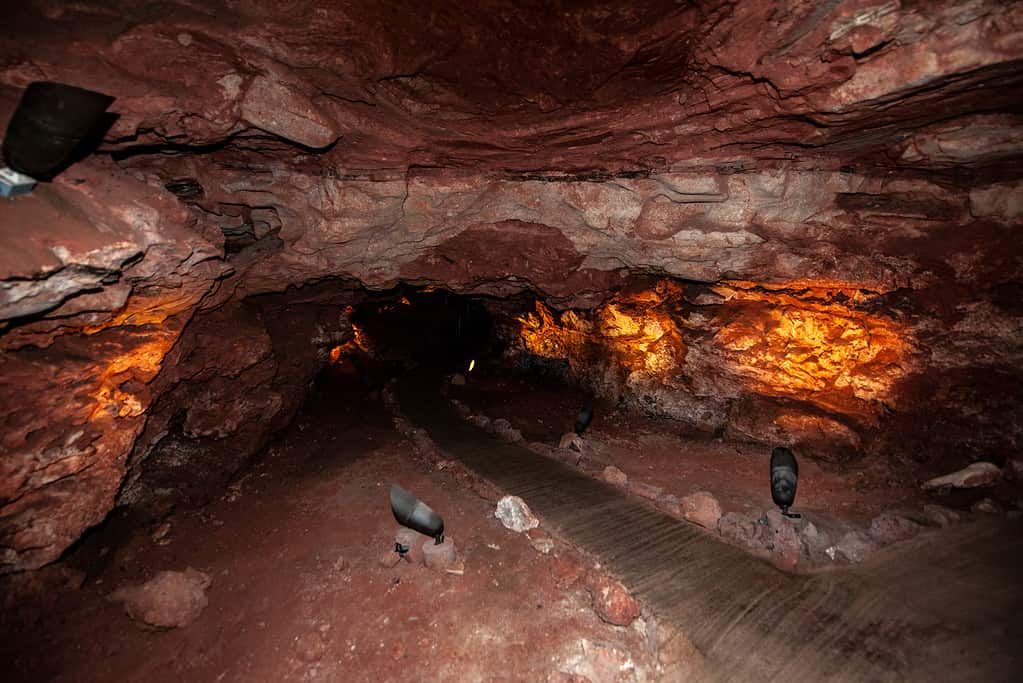
There are sections of Wind Cave you can explore, but stepping off the path is sure to get you lost.
©Mahmoud Ghazal/Shutterstock.com
One of the main reasons that the Wind Cave in South Dakota is so dangerous is because of its sheer size. Though it’s large, it’s not open, and the winding, maze-like tunnels lead to many people getting lost. There are over 150 miles of tunnels in the cave.
2. Dark Star Cave, Uzbekistan
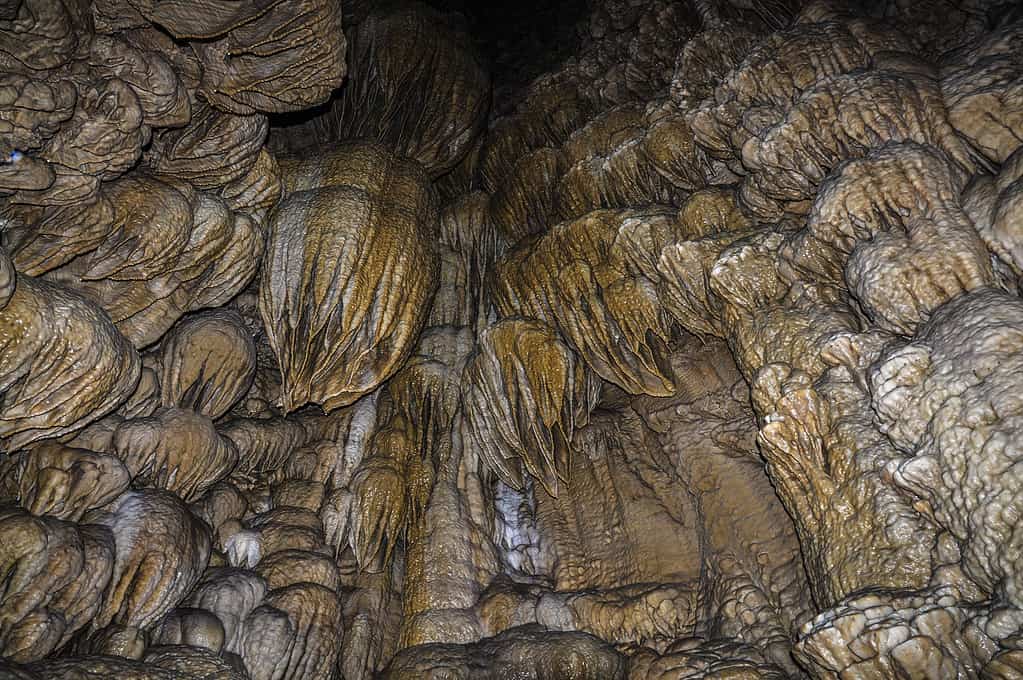
You need a lot of stamina and strength to handle caves like the Dark Star Cave.
©Eugene Kalenkovich/Shutterstock.com
This cave system is often called “Underground Everest.” The descent alone is pretty terrifying, as you have to climb down over 300 feet. That’s after a two-day hike up to the trail. The temperature is freezing as well, preserving anything that falls into the cave. So far, only eight expeditions have explored the cave, with no end in sight.
3. Naica Mine, Mexico
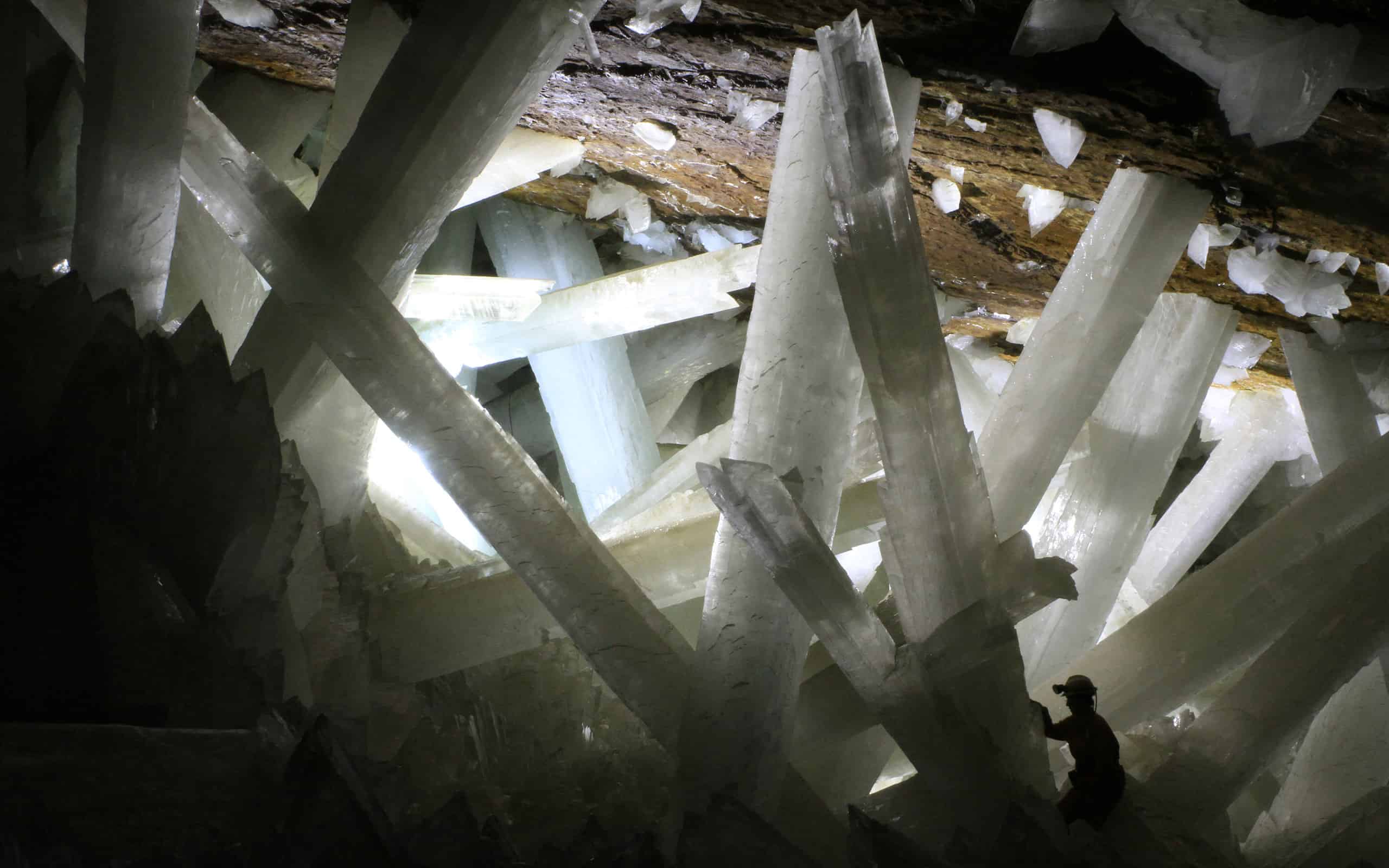
Though this cave is pretty, its hot temperatures make it incredibly deadly.
©Alexander Van Driessche, CC BY 3.0, via Wikimedia Commons - License
Any fan of crystals would think it a dream come true to explore the Naica Mine in Mexico. Unfortunately, the cave is a lot more deadly than it looks. Even with extremely specialized gear, people can only spend 40 minutes exploring the cave. The high humidity and temperature of 120 degrees Fahrenheit make it deadly for anyone entering unprepared.
4. Cueva de la Muerte, Costa Rica

It’s not quite a cave, more like a small little tunnel. But it’s deadly all the same.
©SevenMaps/Shutterstock.com
This cave, called “Cave of Death” in English, isn’t big or dangerous in shape. It’s only about 10 feet long. However, it’s full of carbon dioxide. People who enter this cave often end up suffocating as they’re unprepared for the lack of air.
5. Krubera Cave, Georgia

For a while, Krubera Cave was thought to be the deepest cave in the world.
©Yuri Kasyan / Creative Commons - License
Krubera Cave is both the oldest and one of the most dangerous caves in the world. The main cavity measures over 7,200 feet deep. The cave is fairly labyrinth-like and there are areas with an intense amount of pressure some people can’t handle. Getting trapped or lost here is extremely likely.
6. Optymistychna Cave, Ukraine

Flaky stones like this make up most of the wall of Optymistychna Cave.
©Gennady Grechishkin/Shutterstock.com
The narrow, cramped passageways and winding tunnels are just part of what makes this cave so dangerous. The main risk comes from the material that makes up the cave. The walls are gypsum, which is easy to break. Some areas of the tunnel walls are less than a foot thick. Someone tripping and hitting the wall could potentially cause structural cracks that lead to a cave-in.
7. Kitum Cave, Africa

Kitum is also known as an
elephant
cave because it’s one of the caves where elephants go to get salt.
©MossStudio/Shutterstock.com
Though not yet confirmed, it’s thought that somewhere in Kitum Cave, the origin of two quite deadly diseases originated. These are Ebola and Marburg virus disease. Two people who went caving here ended up contracting the Marburg virus disease. It’s thought that inside is some animal species that’s the vector. However, so far, the animals tested by scientists have not shown signs of being vectors.
8. Veryovkina Cave, Georgia
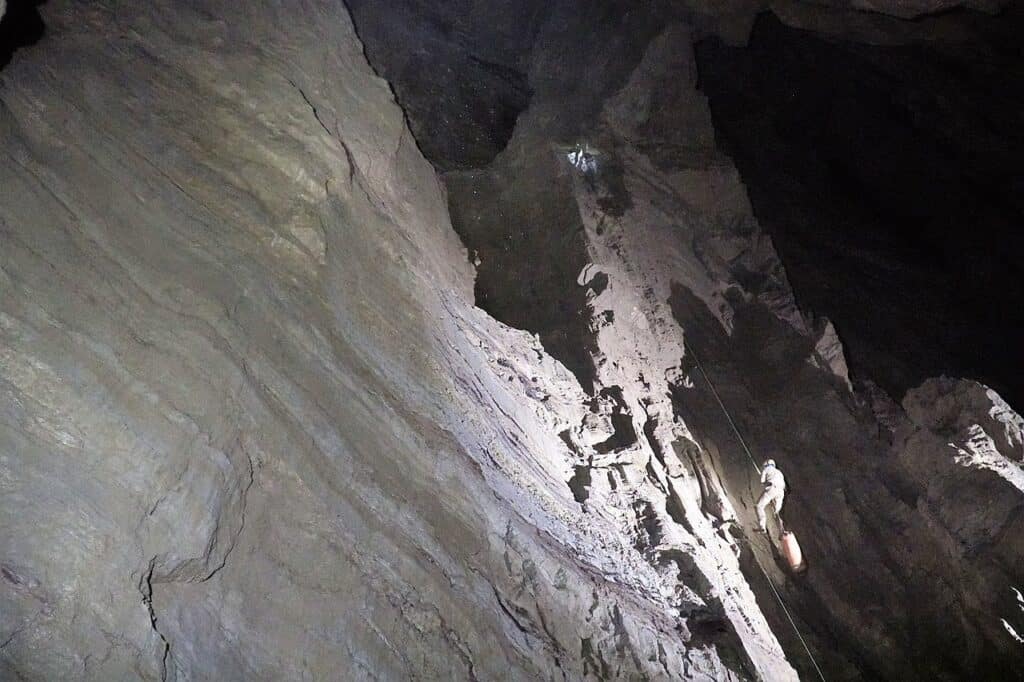
After using drones to travel deep into the cave system, Veryovkina Cave is currently considered the deepest cave system in the world.
©Petr Lyubimov / Creative Commons - License
This cave and Krubera Cave are often mentioned together because they are so close to one another. This is the deepest cave in the world, reaching 7,293 feet deep into the earth. It also has a chance of flooding, and the cold temperatures can cause severe cases of hypothermia.
9. Puerto Princesa Subterranean River, the Philippines

When you get out of the cave, you’ll end up somewhere in the South China Sea.
©Millie Bond - Copyright A-Z Animals
This is an amazing cave to visit, but it’s also quite dangerous. The area is an underground river system. It’s called St. Paul Underground River and is a UNESCO World Heritage Site. It’s possible to enter the cave, but you have to do it via boat, as the river releases you directly into the South China Sea. Also, it’s best to check the water beforehand as a rough day on the ocean can lead to high tides and huge waves inside the cave.
10. Sima de la Cornisa, Spain
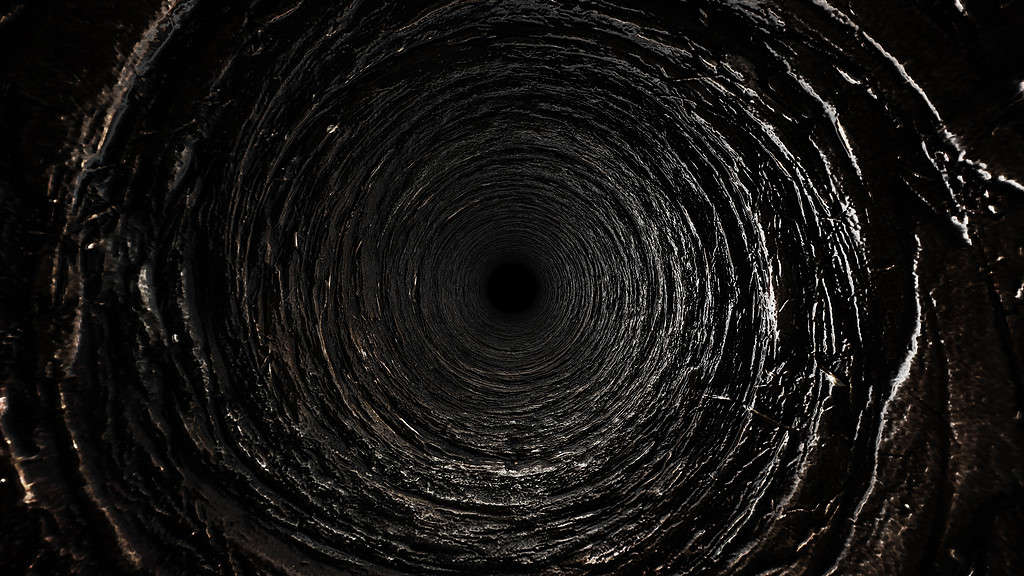
While this Spanish Cave doesn’t look exactly like this picture, you can imagine this is what it feels like for explorers climbing down to the depths.
©Motiongrapher/Shutterstock.com
Sima de la Cornisa is a vertical descent down the center of a mountain. It’s located right in the Picos de Europa. The cave reaches down 4944 feet in a straight shot, so one wrong move or a broken rope is certain to lead to death. Interestingly, 28 Neanderthal skeletons were found in one of the deeper sections of the cave, but people aren’t sure how they got down there.
The photo featured at the top of this post is © DCrane08/iStock via Getty Images
Thank you for reading! Have some feedback for us? Contact the AZ Animals editorial team.






